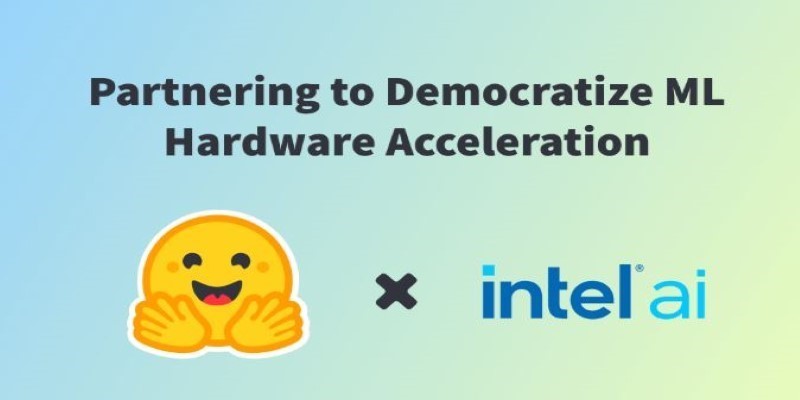Advertisement
Gradio’s rise to one million users wasn’t about hype or big marketing. It happened because the tool made something that used to be complicated—creating machine learning demos—quick and accessible. Before Gradio, showcasing an ML model meant writing extra backend code or deploying it to a server. Gradio stripped that away.
Developers could now build a simple web interface in Python and share it instantly. That shift opened doors for students, researchers, and solo developers—people who wanted to show their work, not manage infrastructure. The journey to a million users didn’t come from chasing scale. It came from solving a real problem the right way.
Gradio wasn't built for companies. It was built for individuals who experiment, build, and test. Early users were students with projects, researchers publishing papers, and hobbyists sharing side work. The interface was forgiving. You could write a function, define your inputs and outputs, and the whole thing ran in the browser—no extra setup, no deployment headaches.
This ease of use attracted a diverse user base. Tutorials, blog posts, and demos spread through the developer community. Because it was open source, the feedback loop stayed short. Users reported bugs and asked for features, and the Gradio team responded quickly.
The tool didn't try to do everything. It just made showing your model's behavior fast and simple. And that focus made it flexible. Whether someone wanted to classify images, analyze text, or experiment with audio, Gradio gave them a direct way to interact with and share their work.
Hitting one million users means more than handling volume—staying useful as more people show up. Gradio added features over time but never strayed far from its core purpose: turning Python functions into shareable interfaces. This focus helped avoid unnecessary complexity.

When Hugging Face brought Gradio into its ecosystem, the reach expanded. With Hugging Face Spaces, users could launch live demos by pushing code to a GitHub repo. They didn't need to run servers or manage deployments. This made Gradio even more appealing—not just to developers but also to educators, artists, and others outside the machine learning world.
Suddenly, people used Gradio to teach, explore creative projects, and share models with non-technical audiences. The interface didn't just serve coders—it became a communication tool. The variety of uses grew quickly, and so did the feedback, helping the tool evolve while keeping its original feel intact.
The strength of Gradio's user growth came from this mix: technical users found it efficient, and non-technical users found it approachable. It stayed relevant by sticking to one job and doing it well.
Gradio didn't grow because of ads or sales—it grew because people talked about it. Developers tweeted their demos. Researchers included live models with papers. Teachers shared tools built with it. Each moment drew in new users, not with promises, but by showing what was possible.
The community was part of the process. GitHub and Discord weren't just places to report bugs—they were active spaces where people shaped Gradio's future. The team stayed open to suggestions, and the tool improved because of how people actually used it, not just how it was designed.
Docs and examples were built with this same spirit. They didn't feel like formal manuals—they felt like advice from someone who had already been through it. This made learning Gradio fast and practical. If you ran into a problem, someone might have already shared the solution.
That openness made users feel like contributors. When a tool treats its users like collaborators, they tend to stick around. Gradio’s user base didn’t just grow in size—it grew in depth. People didn't just use it once and leave; they kept coming back with new projects.
Gradio's user growth was organic. It didn't rely on pushing people in—it relied on users pulling others in because it saved time and made work easier to share.
One million users is a milestone, but it's not the finish line. What matters more is how Gradio got there. It stayed focused on doing one thing well—letting people demo machine learning models quickly and simply. That clarity made it easy to trust and use the product.

Now, as AI spreads into more fields, Gradio serves as a middle layer. It helps people interact with complex models without needing to understand every piece. It lets researchers show their work clearly and lets newcomers explore without being overwhelmed.
The future of Gradio is unlikely to be defined by major overhauls. It'll be shaped by small changes that respond to how people use it, including new input types, improved layout options, and tighter integrations. These improvements come from real use, not top-down planning.
What has always made Gradio work is the balance between simplicity and capability. You can start with just a few lines of code, but that does not limit you at all. And because the community plays such a significant role, the tool continues to evolve in ways that reflect people's real, everyday needs and challenges.
Gradio’s path to one million users came from staying simple, open, and useful. It provided developers and researchers with a fast way to share machine learning work without requiring extra setup or barriers. What helped it grow wasn't just what it did—but how it made people feel part of the process. From students building projects to educators running demos, users kept coming back because it worked without friction and didn't require extra overhead. As AI tools spread into new areas, Gradio remains steady by focusing on clarity over complexity. Its growth wasn’t forced—it was earned, one project at a time, by practically meeting real needs in honest, accessible ways.
Advertisement

How Amazon S3 works, its storage classes, features, and benefits. Discover why this cloud storage solution is trusted for secure, scalable data management

Intel and Hugging Face are teaming up to make machine learning hardware acceleration more accessible. Their partnership brings performance, flexibility, and ease of use to developers at every level

How the Philadelphia Eagles Super Bowl win was accurately predicted by AI, showcasing the growing role of data-driven analysis in sports outcomes

DataRobot acquires AI startup Agnostiq to boost open-source and quantum computing capabilities.
Advertisement

AI in Cars is transforming how we drive, from self-parking systems to predictive maintenance. Explore how automotive AI enhances safety, efficiency, and comfort while shaping the next generation of intelligent vehicles

Siemens expands its industrial AI efforts, driving innovation and efficiency across manufacturing and engineering.

Find the top eight DeepSeek AI prompts that can accelerate your branding, content creation, and digital marketing results.

How Llama Guard 4 on Hugging Face Hub is reshaping AI moderation by offering a structured, transparent, and developer-friendly model for screening prompts and outputs
Advertisement

Microsoft has introduced stronger safeguards and policies to tackle malicious Copilot AI use, ensuring the tool remains safe, reliable, and aligned with responsible AI practices

Running large language models at scale doesn’t have to break the bank. Hugging Face’s TGI on AWS Inferentia2 delivers faster, cheaper, and smarter inference for production-ready AI

Learn how ZenML helps streamline EV efficiency prediction—from raw sensor data to production-ready models. Build clean, scalable pipelines that adapt to real-world driving conditions

How the AI-enhancing quantum large language model combines artificial intelligence with quantum computing to deliver smarter, faster, and more efficient language understanding. Learn what this breakthrough means for the future of AI